The Art of Layering: How To Dress For A Yellowstone Winter Adventure

If you are visiting Yellowstone during its most beautiful and harrowing season, simply look to the “experts” for inspiration. The park’s wildlife are naturally equipped for frigid weather in many ways, including growing thick underlayers of fur or insulating downy feathers and packing on layers of fat during times of feast. While we may not have the luxury of growing a layer of fur or feather, we can certainly mimic the warmth of the bison, elk, trumpeter swans, chickadees, and otters through the art of layering. This technique, moving from top to bottom, will ensure you’re well prepared for your winter adventure in Yellowstone. Keep reading to learn more about the proper gear for a safe and enjoyable winter experience!
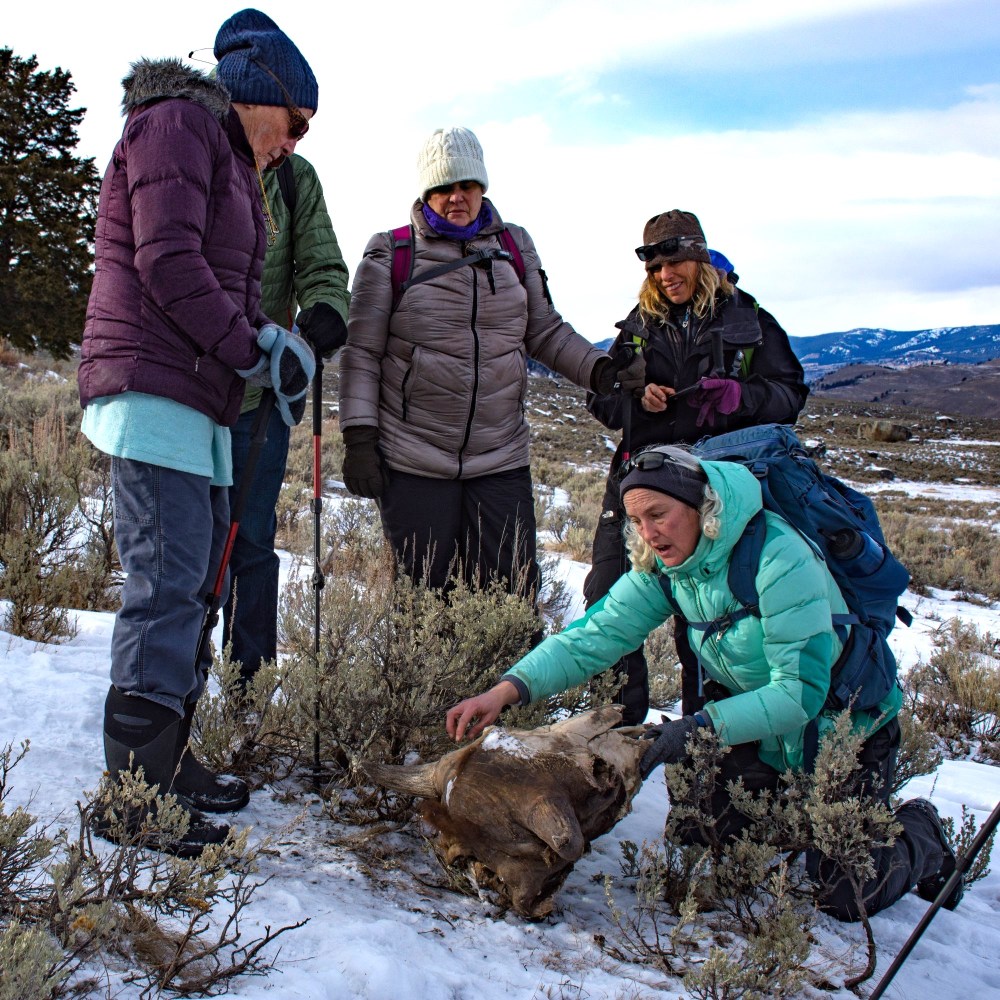
Being prepared with the proper winter clothing allows for opportunities for learning and discovery in the field – despite chilly temperatures!
HEAD, FACE, & NECK:
Heat rises. In winter, that means protecting your head is critical for staying warm. Starting from the top, a thick winter hat is a necessity, providing not just warmth but also a sense of comfort and protection. A balaclava underneath adds extra warmth and ear protection, shielding your face and neck from the biting winds often experienced in Yellowstone. A scarf or neck gaiter can further enhance your protection from the cold and allow you to focus on what matters; having the time of your life!
UPPER BODY (TORSO & ARMS)
Moving down the body, we come to torso protection, a critical component of a winter outfit. You will want to start with a base layer(s) made of wool or synthetic materials with a snug but not overly compressive fit.
*Base layers come in varying “weights” from very thin but warm (lightweight) to thicker and much warmer (“expedition” or “heavyweight”). Look for base layers that are moisture wicking and quick drying and AVOID COTTON AT ALL TIMES! Cotton does not offer insulation if they get wet while wool and synthetic materials can provide some warmth even when damp.

Base layers come in many “weights” allowing for personal customization of protection against the cold.
- *Lightweight base-layer (wool, silk, or synthetic)
- *Midweight base-layer (wool or synthetic)
- *Heavyweight base-layer (wool or synthetic)
Next, insulating layers like a wool sweater, fleece jacket, or medium-weight puffy jacket will trap heat in the airspace around your body. Duck or goose down is an excellent material for puffy jackets. Fortunately, there are also vegan and hypoallergenic options on the market that will keep you equally warm. Either way, this is an essential layer that should be high-quality. To top off your torso, throw on a thicker “over the jacket,” such as a thick down parka or ski jacket, and finish that off with a wind-blocking waterproof shell (i.e., a rain jacket) to keep all that valuable body heat locked in your insulating “puffy” layer.
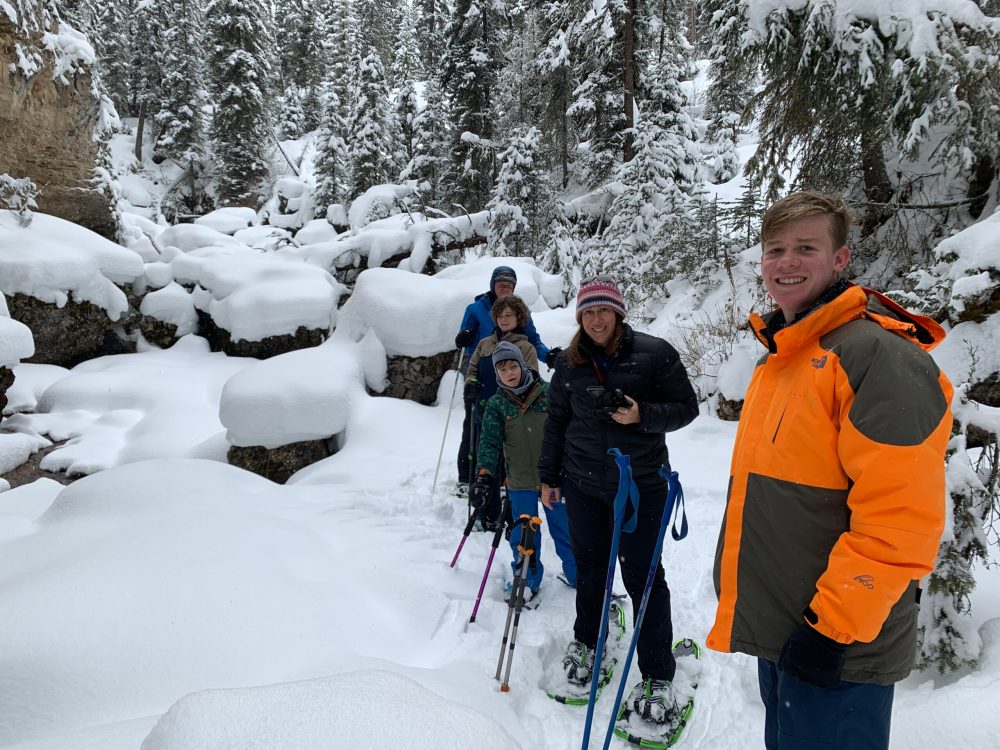
With care pre-trip planning and preparation, this family was well-equipped to enjoy a day exploring Yellowstone’s frozen wonders!
- Fleece or sweater layer
- Insulated vest (down or fleece)
- Insulated jacket (down or synthetic)
LOWER BODY (WAIST & LEGS):
For the legs, a sweat-wicking base layer underneath with a thick pair of water-resistant pants offers versatility and comfort in the cold. If you feel the cold more easily, an insulating layer between the base and outer shell layers, similar to the torso, can be added. Whether it’s insulated ski pants, snow pants, or a combination of warm fleece pants with water-resistant ‘soft shell’ pants or rain pants, you’ll be ready for any situation.
- *Lightweight base-layer (wool, silk, or synthetic)
- *Midweight base-layer (wool or synthetic)
- *Heavyweight base-layer (wool or synthetic)
- Fleece or down pants
- Insulated snow/ski pants
- Soft-shell pants (worn over base-layer or fleece or down pants for wind/rain protection)
- Rain pants
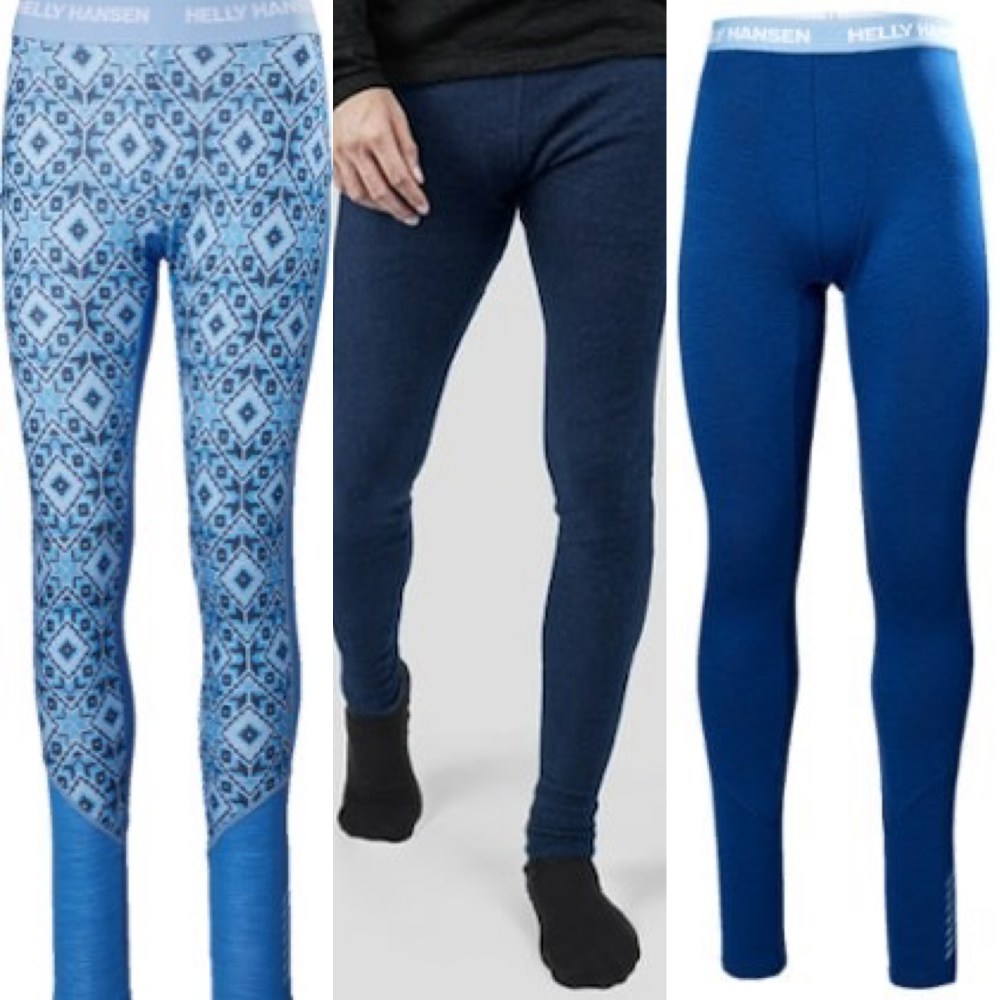
Base-layers come in many “weights” allowing for personal customization for protection from the cold.
HANDS, FEET & ACCESSORIES*:
And don’t forget your fingers and toes! You will want two pairs of gloves (a thin liner glove and water and wind-proof heavier glove/mitten), and several pairs of wool socks. Cotton is a material you should generally avoid in a winter outfit, especially for socks. When cotton gets wet, it saps your body heat, whereas wool keeps you warm even when you get snow down your boots!
- Heavy duty gloves/mittens
- Liner glove
- Socks (wool – merino wool is much gentler on skin sensitive to wool)
And speaking of boots, these are one of the most important items on your gear list! A few well-loved brands in Yellowstone are Baffin, Steger Mukluks, Muck Boots, and insulated hiking boots such as Oboz or Columbia Sportswear models (to name a few). Nobody wants to miss out on a wolf sighting due to cold feet, so plan on a waterproof boot with an insulation rating of at least 200 grams. If your feet run cold, you may want to consider 400 grams or higher. Finally, sunglasses are critical in preventing the glare of the sun off the snow from burning your eyes. We recommend polarized glasses to reduce glare and allow for sharper viewing.
- Winter Boots Boots should NOT be tight fitting. You will want to be able to wiggle your toes easily to ensure good circulation. If possible we recommend heading to your local REI or outdoor store to try winter boots on. If ordering online, reading reviews can be extremely insightful regarding sizing.
- Polarized glasses (amber/yellow is ideal for the flat light often seen in winter)
- Chapstick
- Sunblock
- Trekking or ski poles* (included on Yellowstone Wild tours upon request)
- Daypack*
- Insulated thermos for hot beverages*
- Insulated thermos for water (to prevent freezing!)
- *Optional but great for enhancing comfort and maximizing safety and functionality
Disposable hand warmers can save the day when it comes to hands and feet. Yellowstone Wild excursions include a fully stocked supply of complementary hand and toe warmers for guests on our winter tours.
Feeling overwhelmed? We know it can be costly and time consuming to ensure you are properly prepared for your winter adventure. For the sake of the planet (and your wallet!), we highly recommend renting gear if you are planning a one-time winter trip and have no need for specialized winter gear in the future. Check out Sports Basement (Winter Gear Rentals) to see about selecting the gear you need only for the time you need it. And of course, it never hurts to visit your local second-hand stores, the REI Garage, or a family or friends closet to see what treasures might be found.
Now that you know how to build a shield against the cold, a trip to Yellowstone in the winter becomes a safe, enjoyable, and exciting possibility – full of adventures waiting to be experienced! If you want to get away from the crowds, see stunning wilderness, diverse wildlife, and otherworldly landscapes, Yellowstone Wild invites you to try out your gear on a journey to Engage Your Curiosity in Yellowstone’s “Winter Wonderland”!
Blog by YW Naturalist Guide Aleksa B and General Manager Tyrene R. All photos provided by YW Staff
To learn more about Tyrene, Aleksa, and the entire Yellowstone Wild Staff, check out our “About Us” page!
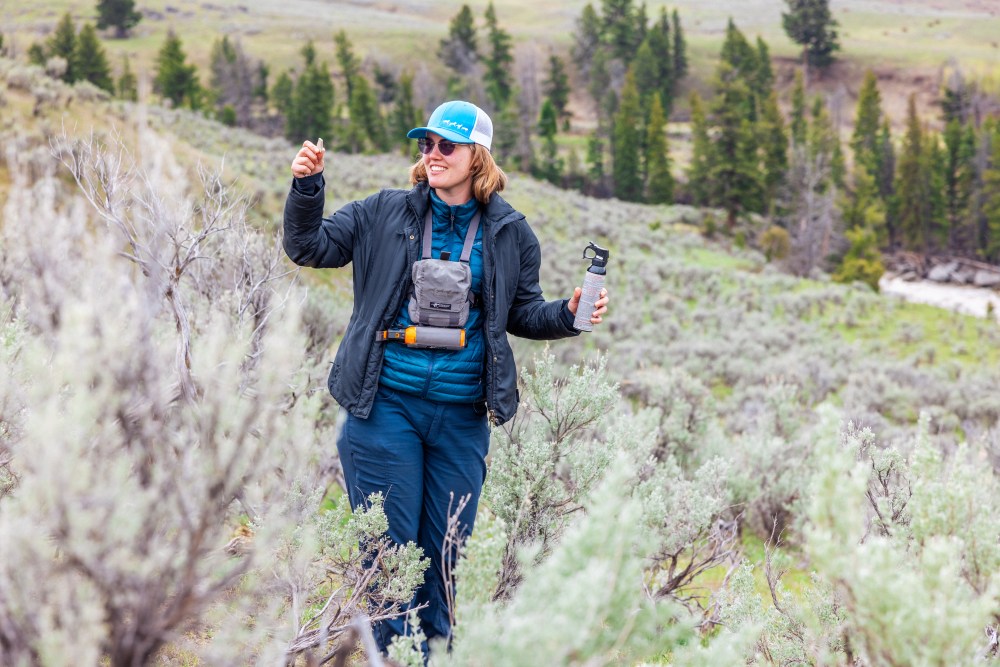
Yellowstone Wild Naturalist Guide Aleksa B
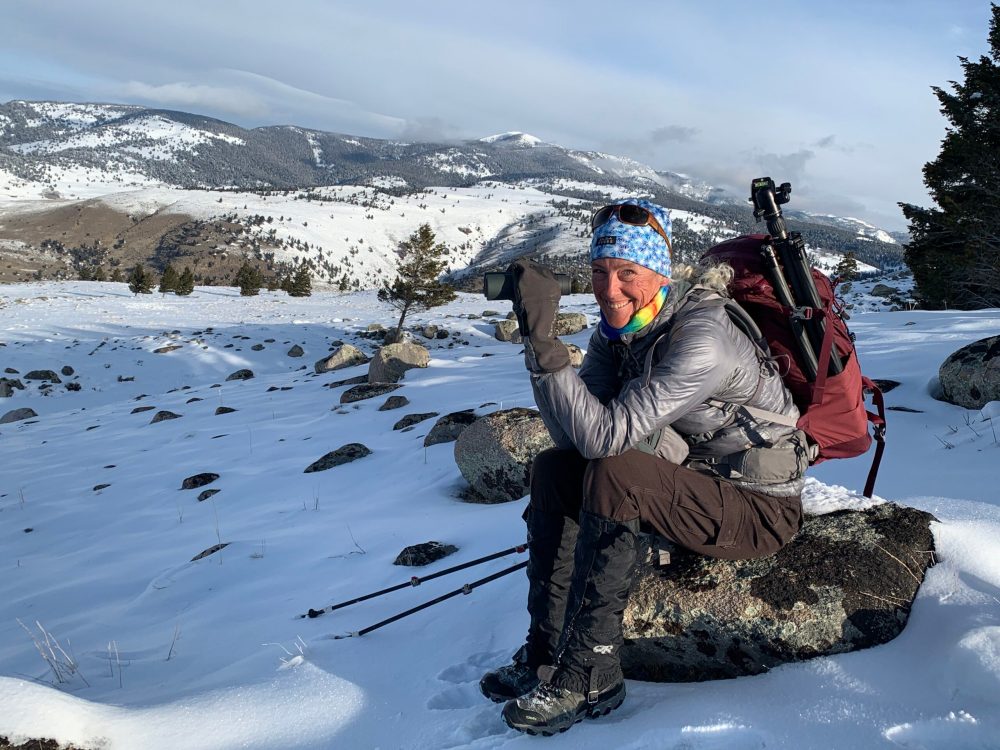
Yellowstone Wild General Manager and part-owner, Tyrene R.




